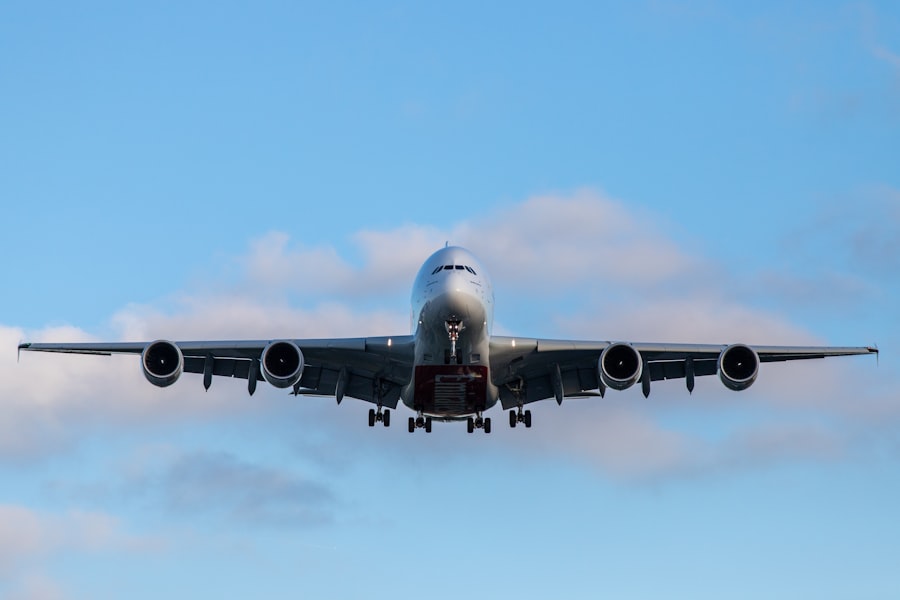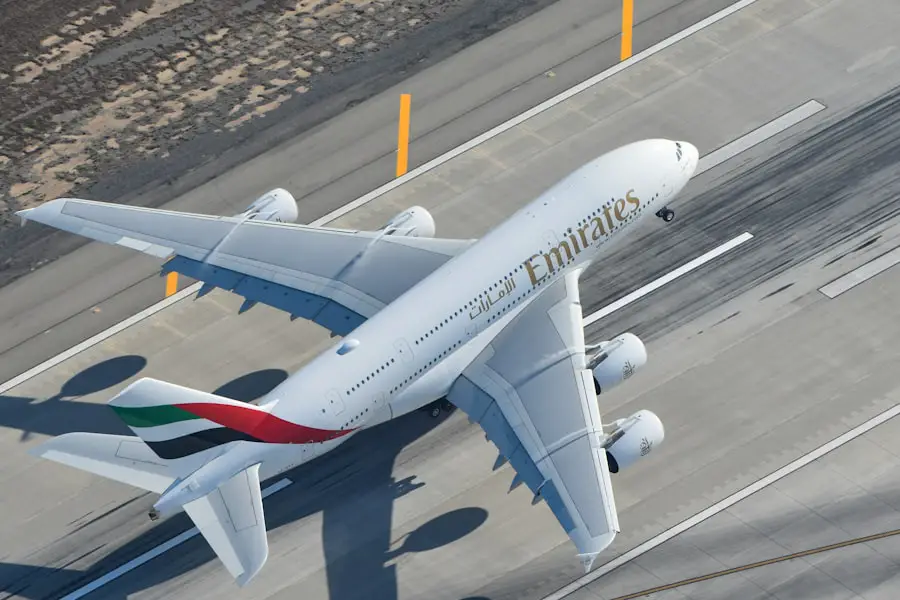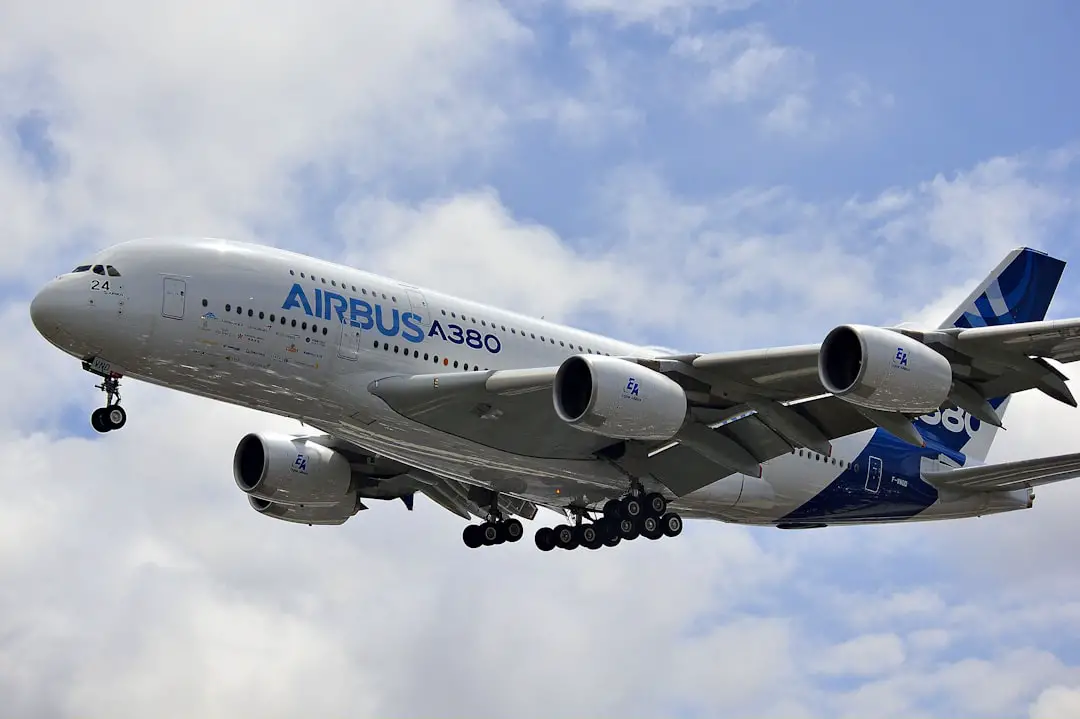Airliner speed is a critical aspect of commercial aviation that influences not only the efficiency of air travel but also the overall experience of passengers. The speed at which an airliner operates can determine flight duration, fuel consumption, and even the scheduling of air traffic. In an era where time is of the essence, understanding the dynamics of airliner speed becomes increasingly important.
The evolution of airliner speed has been shaped by technological advancements, regulatory frameworks, and the ever-changing demands of the global travel market. Historically, airliner speed has seen significant transformations, from the early days of aviation when aircraft barely reached 100 knots to modern jets that cruise at speeds exceeding 500 knots. This evolution reflects not only improvements in engineering and aerodynamics but also a growing emphasis on efficiency and passenger comfort.
As airlines strive to reduce operational costs while enhancing service quality, the quest for speed remains a pivotal focus in the design and operation of commercial aircraft.
Key Takeaways
- Airliner speed is a crucial factor in determining travel time and efficiency for commercial flights.
- The fastest airliners in the world include the Boeing 747-8, Airbus A350, and the upcoming Boom Overture supersonic jet.
- Factors affecting airliner speed include air density, altitude, temperature, and wind conditions.
- Jet engines play a critical role in airliner speed, with advancements in engine technology contributing to faster and more efficient flights.
- Weather conditions such as headwinds or tailwinds can significantly impact airliner speed and travel time.
The Fastest Airliners in the World
When discussing the fastest airliners in history, one cannot overlook the Concorde, a turbojet-powered supersonic passenger airliner that operated from 1976 until 2003. Capable of reaching speeds of over Mach 2, or approximately 1,354 miles per hour (2,180 kilometers per hour), the Concorde drastically reduced transatlantic flight times, making it a symbol of luxury and technological prowess. Its unique design, featuring a slender fuselage and delta wings, allowed it to cruise at altitudes of 60,000 feet, well above commercial air traffic, which contributed to its remarkable speed.
In the realm of subsonic airliners, the Boeing 747-8 and the Airbus A380 are among the fastest. The Boeing 747-8 has a maximum cruising speed of around 570 miles per hour (917 kilometers per hour), while the Airbus A380 can reach similar speeds. These aircraft are designed for long-haul flights and can carry hundreds of passengers across vast distances efficiently.
Their speed is complemented by advanced aerodynamics and powerful engines that enable them to maintain high velocities while ensuring passenger comfort.
Factors Affecting Airliner Speed

Several factors influence the speed at which an airliner can operate effectively. One primary consideration is the aircraft’s design and aerodynamics. The shape of an aircraft significantly impacts its drag coefficient; a streamlined design reduces drag and allows for higher speeds.
Engineers meticulously design wings, fuselage shapes, and control surfaces to optimize airflow and minimize resistance during flight. Another critical factor is the weight of the aircraft. Heavier planes require more thrust to achieve and maintain speed, which can limit their operational efficiency.
Airlines must balance payload capacity with fuel efficiency; thus, every additional passenger or piece of cargo can affect overall performance. Additionally, the materials used in construction play a role; lighter materials such as carbon fiber composites can enhance speed by reducing overall weight without compromising structural integrity.
The Role of Jet Engines in Airliner Speed
| Jet Engine Type | Maximum Speed (mph) | Typical Airliner |
|---|---|---|
| Turbojet | 600-700 | Boeing 707 |
| Turbofan | 500-600 | Boeing 737 |
| Turbo prop | 300-400 | ATR 72 |
Jet engines are at the heart of an airliner’s ability to achieve high speeds. The development of turbofan engines has revolutionized commercial aviation by providing a combination of thrust and fuel efficiency that was previously unattainable. These engines work by drawing in air through a fan, compressing it, mixing it with fuel, and igniting it to produce thrust.
The efficiency of this process directly correlates with the aircraft’s speed capabilities. Modern jet engines are designed with advanced materials and technologies that allow them to operate at higher temperatures and pressures, resulting in increased thrust output. For instance, engines like the Pratt & Whitney GTF and the Rolls-Royce Trent XWB have been engineered to maximize performance while minimizing fuel consumption and emissions.
The thrust-to-weight ratio of an engine is crucial; higher ratios enable faster acceleration and climbing rates, allowing aircraft to reach cruising speeds more quickly.
The Impact of Weather on Airliner Speed
Weather conditions can significantly affect an airliner’s speed during flight. Wind patterns, particularly jet streams—fast flowing air currents found in the upper atmosphere—can either aid or hinder an aircraft’s progress. When flying with a tailwind, an airliner can experience increased ground speed, reducing travel time.
Conversely, headwinds can slow down an aircraft’s progress, necessitating adjustments in flight planning to maintain schedules. Turbulence is another weather-related factor that can impact speed. While pilots often navigate around turbulent areas to ensure passenger comfort, flying through turbulence can lead to temporary reductions in speed as pilots adjust altitude or course to find smoother air.
Additionally, adverse weather conditions such as thunderstorms or heavy precipitation may require diversions or altitude changes that can further affect overall flight speed.
Speed Records in Airliner History

Supersonic Speed Demons
The Concorde holds several records for transatlantic flights, including the fastest-ever crossing from New York to London in just under three hours. This achievement showcased not only the capabilities of supersonic travel but also highlighted the potential for time-saving innovations in commercial aviation.
Subsonic Successes
In terms of subsonic records, the Boeing 747-400 set a notable record for a non-stop flight from Hong Kong to London in 1996, completing the journey in just over 22 hours with multiple stops along the way.
Efficiency and Reliability
This record emphasized the efficiency and reliability of long-haul commercial flights while demonstrating how advancements in technology could facilitate faster travel across great distances.
The Average Speed of Commercial Airliners
The average cruising speed for most commercial airliners typically ranges between 500 to 600 miles per hour (approximately 800 to 965 kilometers per hour). This range allows airlines to balance operational efficiency with passenger comfort while adhering to safety regulations. Aircraft like the Boeing 737 and Airbus A320 are designed for short to medium-haul flights and generally operate within this speed range.
Long-haul aircraft such as the Boeing 777 and Airbus A350 also fall within this average but may have slightly higher cruising speeds due to their advanced aerodynamics and engine technology. The ability to maintain these speeds over long distances is crucial for airlines aiming to optimize fuel consumption and minimize travel time for passengers.
The Future of Airliner Speed
Looking ahead, the future of airliner speed is poised for exciting developments driven by technological advancements and environmental considerations. Concepts such as electric propulsion systems and hybrid engines are being explored as potential solutions to reduce carbon emissions while maintaining high speeds. Companies like Boom Supersonic are working on developing new supersonic jets that promise to revive high-speed travel for commercial passengers.
Additionally, advancements in materials science may lead to lighter and stronger aircraft structures that can withstand higher speeds without compromising safety or efficiency. Innovations in aerodynamics will continue to play a vital role; researchers are exploring new wing designs and configurations that could further enhance performance at cruising speeds.
The Importance of Speed in Airliner Design
Speed is a fundamental consideration in airliner design that influences various aspects of an aircraft’s performance and operational capabilities. Engineers must strike a balance between achieving high speeds and ensuring safety, fuel efficiency, and passenger comfort. The design process involves extensive simulations and wind tunnel testing to evaluate how different shapes and configurations will perform at various speeds.
Moreover, regulatory requirements dictate certain performance standards that must be met by commercial aircraft. These regulations often focus on aspects such as takeoff and landing speeds, climb rates, and stall characteristics—all of which are influenced by an aircraft’s design choices related to speed.
How Airliner Speed Affects Travel Time
The speed of an airliner has a direct impact on travel time for passengers, influencing everything from scheduling to layover durations. Faster aircraft can reduce flight times significantly; for instance, a transcontinental flight that takes six hours on a conventional jet may be completed in four hours on a supersonic aircraft like the Concorde. This reduction not only enhances convenience for travelers but also allows airlines to optimize their schedules by increasing the number of flights they can operate within a given timeframe.
Additionally, faster travel times can lead to increased competitiveness among airlines as they vie for customers who prioritize efficiency and convenience in their travel plans. As such, airlines continually seek ways to improve their fleet’s speed capabilities while balancing operational costs and environmental considerations.
The Significance of Airliner Speed
Airliner speed remains a cornerstone of modern aviation that shapes not only how we travel but also how airlines operate within an increasingly competitive market. As technology continues to evolve, so too will our understanding and implementation of speed in commercial aviation. From supersonic travel aspirations to innovations in engine design and aerodynamics, the quest for faster air travel is far from over.
As we look toward the future, it is clear that airliner speed will continue to play a pivotal role in shaping the landscape of global transportation.
If you’re curious about the speed of airliners, you may also be interested in learning about the best travel pants with hidden pockets. These pants not only provide comfort and style for your travels but also offer convenient storage options for your belongings. Check out this article to find out more about these practical and versatile travel pants.
FAQs
What is the average speed of an airliner?
The average speed of an airliner during cruise is around 575-580 miles per hour (930-930 km/h).
What is the maximum speed of a commercial airliner?
The maximum speed of a commercial airliner varies depending on the aircraft type, but it typically ranges from 500 to 600 knots (575 to 690 mph or 925 to 1110 km/h).
How does the speed of an airliner compare to other modes of transportation?
Airliners are significantly faster than most other modes of transportation. For example, the average speed of a car is around 60-70 mph, while a high-speed train may reach speeds of 150-200 mph.
What factors can affect the speed of an airliner?
Factors that can affect the speed of an airliner include wind speed and direction, air traffic control restrictions, and the aircraft’s weight and configuration.
What is the speed of sound, and can airliners reach it?
The speed of sound, also known as Mach 1, is approximately 767 mph (1234 km/h) at sea level. Some military aircraft can reach or exceed the speed of sound, but commercial airliners typically cruise at subsonic speeds.
